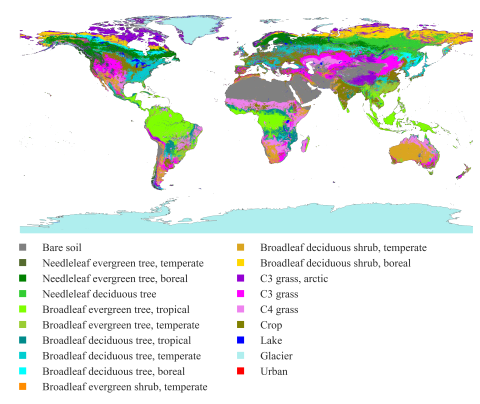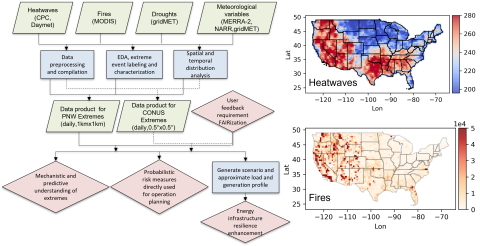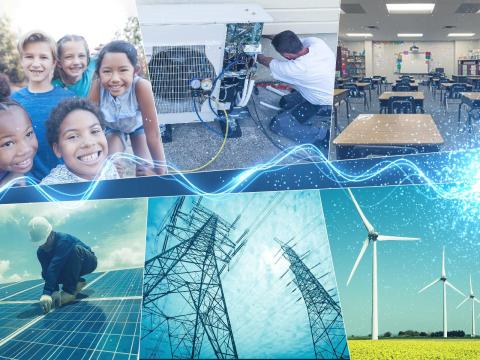We report the construction of a database of infrared spectra aimed at detecting the gases emitted by biomass burning. The project uses many of the methods of the Pacific Northwest National Laboratory (PNNL) infrared database, but the selection of the species and special experimental considerations...
Filter results
Category
- (-) Chemistry (10)
- (-) Renewable Energy (5)
- (-) Data Analytics & Machine Learning (4)
- (-) Plant Science (3)
- (-) High-Performance Computing (1)
- (-) Terrestrial Aquatics (1)
- Scientific Discovery (309)
- Biology (200)
- Earth System Science (136)
- Human Health (104)
- Integrative Omics (74)
- Microbiome Science (42)
- Computational Research (25)
- National Security (22)
- Computing & Analytics (15)
- Energy Resiliency (10)
- Data Analytics & Machine Learning (9)
- Computational Mathematics & Statistics (7)
- Materials Science (7)
- Visual Analytics (6)
- Chemical & Biological Signatures Science (5)
- Weapons of Mass Effect (5)
- Atmospheric Science (4)
- Coastal Science (4)
- Ecosystem Science (4)
- Cybersecurity (2)
- Distribution (2)
- Electric Grid Modernization (2)
- Energy Efficiency (2)
- Energy Storage (2)
- Grid Cybersecurity (2)
- Solar Energy (2)
- Bioenergy Technologies (1)
- Computational Mathematics & Statistics (1)
- Grid Analytics (1)
- Subsurface Science (1)
- Transportation (1)
- Wind Energy (1)
Content type
Tags
- Mass Spectrometry (4)
- Energy Equity (2)
- Energy Storage (2)
- Omics (2)
- PerCon SFA (2)
- Activity-Based Protein Profiling (1)
- Bacterial Persistence (1)
- Bacterial Signaling (1)
- Bioenergy Production (1)
- Chemical Biology (1)
- Chemical Probes (1)
- Energy Burden (1)
- Energy Justice (1)
- Enzymology (1)
- High-Performance Computing (1)
- Imaging (1)
- Instrument Development (1)
- Machine Learning (1)
- Mass Spectrometer (1)
- Metabolic Networks (1)
- metabolomics (1)
- Predictive Modeling (1)
- Protein Engineering (1)
- Proteomics (1)
- Spectroscopy (1)
- Structures for Lossless Ion Manipulations (1)
- Synthetic Biology (1)
- Synthetic Chemistry (1)
- ToF-SIMS (1)
- Tomography (1)
"Visualizing the Hidden Half: Plant-Microbe Interactions in the Rhizosphere" Plant roots and the associated rhizosphere constitute a dynamic environment that fosters numerous intra- and interkingdom interactions, including metabolite exchange between plants and soil mediated by root exudates and the...
HDF5 file containing 10,000 hydraulic transmissivity inputs and the corresponding hydraulic pressure field outputs for a two-dimensional saturated flow model of the Hanford Site. The inputs are generated by sampling a 1,000-dimensional Kosambi-Karhunen-Loève (KKL) model of the transmissivity field...
The database contains 55 compounds and is comprised of the species in the paper referenced below that introduced the concept of the SERDP database.
Category
ProxyTSPRD profiles are collected using NVIDIA Nsight Systems version 2020.3.2.6-87e152c and capture computational patterns from training deep learning-based time-series proxy-applications on four different levels: models (Long short-term Memory and Convolutional Neural Network), DL frameworks...
Supporting data and code uploaded to DataHub for "How do the weather regimes drive wind speed and power production at the sub-seasonal to seasonal timescales over the CONUS?" Created by Ye Liu*, Sha Feng*, Yun Qian, Berg K Larry, Huilin Huang *POC: Ye Liu, Ye.Liu@pnnl.gov Sha Feng, sfeng@pnnl.gov --...
Category
This dataset presents land surface parameters designed explicitly for global kilometer-scale Earth system modeling and has significant implications for enhancing our understanding of water, carbon, and energy cycles in the context of global change. Specifically, it includes four categories of...
As energy prices rise and climate change brings more extreme and frequent days of heating and cooling, households must allocate more of their income to energy bills, increasing their energy burden. Many strategies are employed to alleviate high energy burden, such as weatherization, energy...
Category
Extreme weather events, including fires, heatwaves(HWs), and droughts, have significant impacts on earth, environmental, and power energy systems. Mechanistic and predictive understanding, as well as probabilistic risk assessment of these extreme weather events, are crucial for detecting, planning...
Federal and state decarbonization goals have led to numerous financial incentives and policies designed to increase access and adoption of renewable energy systems. In combination with the declining cost of both solar photovoltaic and battery energy storage systems and rising electric utility rates...
Category
The PNNL-SERDP database was constructed by PNNL to generate the quantitative infrared spectra of gases associated with biomass burning; the reference data are to allow detection and quantification of such gases via infrared absorption spectroscopy. Candidates for the database were selected based on...
Category
Datasets
2
PNNL’s Vision Statement for Equity in the Power Grid Drawing from a wealth of interdisciplinary research in grid modernization, PNNL is spearheading an effort to advance equity and energy justice through the role of scientific research with the goal of building an advanced national power grid...
Datasets
2
Predictive Phenomics is addressing the grand challenge of understanding and predicting phenotype by identifying the molecular basis of function and enable function-driven design and control of biological systems .
Category
Datasets
0
The Human Islet Research Network (HIRN) is a large consortia with many research projects focused on understanding how beta cells are lost in type 1 diabetics (T1D) with a goal of finding how to protect against or replace the loss of functional beta cells. The consortia has multiple branches of...
Category
Datasets
1












